Service Types and Related Treatment Offerings
Columbus Grove Family Dentistry provides you and your family access to General Dental services that are Preventative, Restorative, and Cosmetic in nature. Within these service types lie different forms of treatment.
First, the general differences between service types will be discussed, and then our different treatment offerings will be described. Instead of listing the treatments within a service type, they will be described along a continuum because the various types of treatments are not mutually exclusive. For example, a crown or a bridge can be classified as restorative because it replaces teeth (restoring function) and cosmetic because it enhances one’s appearance. When discussing our treatment offerings, those that are the most preventative in nature will be discussed first. Restorative treatment offerings will transition in, and cosmetic treatment offerings will follow.
Types of Services
Preventative
Preventative Dentistry refers to the range of treatment options that stop the onset, progression, and recurrence of oral disease. Preventative Services entail both in-office and community educational programs, along with different forms of treatment which keep your teeth, gums, and mouth in optimal health. Examples entail oral hygiene prophylaxis (cleanings, x-rays & exams) and sealants. Even though scaling and root planning to treat the onset of periodontal disease can be considered restorative, it will be discussed in the Oral Hygiene Program section. It is performed by one of our highly-skilled hygienists, aiding in the prevention of tooth loss and the onset of other health problems.
Restorative
Restorative Dentistry refers to the study, diagnosis, and integrated management of the teeth and their supporting structures. It involves returning the dentition (teeth) and the supportive structures (gums and jaw bone) to a functional and aesthetic state. Like anything else, your mouth suffers from aging, wear and tear, and occasional mishaps. Examples of "damage control," or restorative dentistry, are amalgams (silver) or composites (white) filings, crowns, veneers, bridges, and dentures.
Cosmetic
Columbus Grove Family Dentistry offers a range of services that can enhance your smile and oftentimes improve function. Procedures range from being simple and inexpensive - to complex and more costly. As always, service utilization will be based on what you need and what you desire. Treatment examples include reshaping, bonding, crowns, bridges, partials, dentures, veneers, and whitening. Let us help you to feel more confident and make a great first impression. To see if any of the listed services fit your needs and desires, ask about a no-pressure consultation.
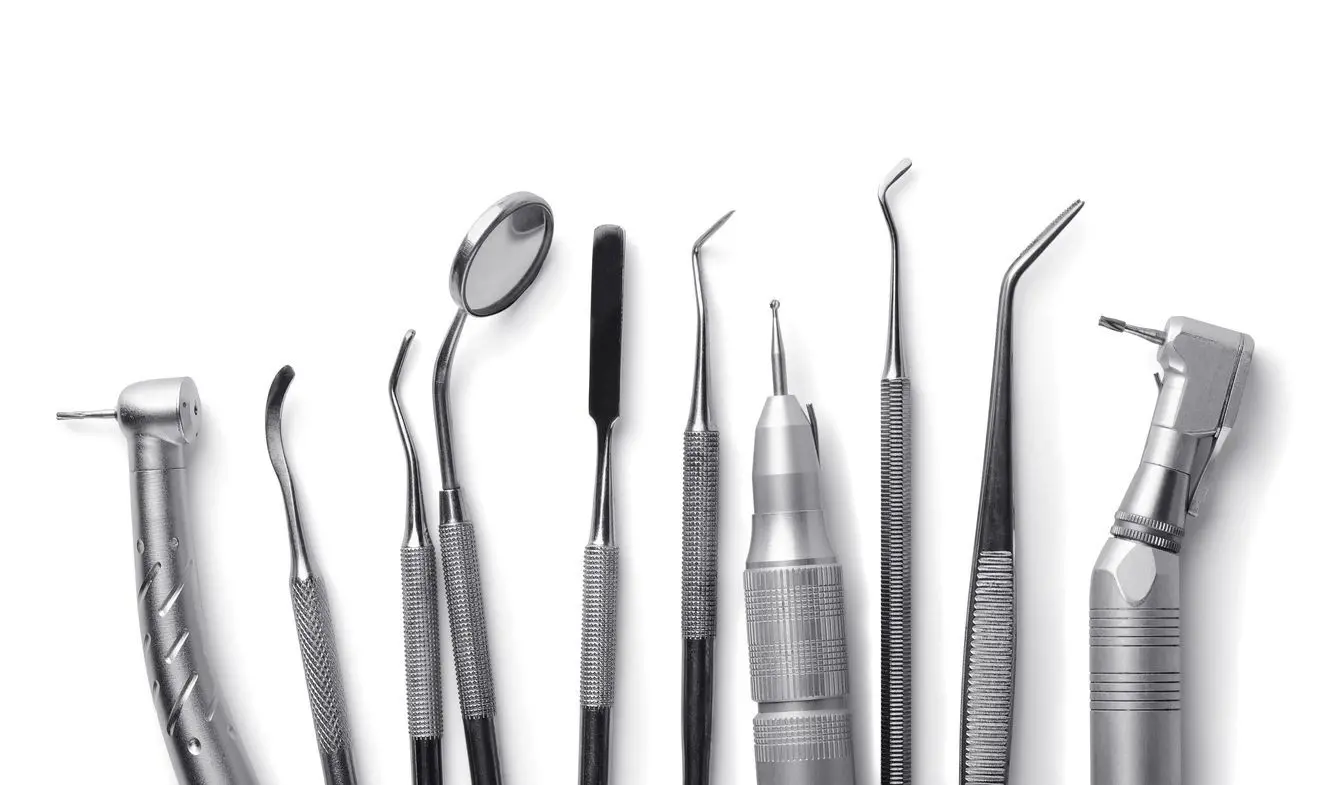
Treatment Offerings
Children’s Dental Care
We welcome kids of all ages! The dentists and staff of Columbus Grove Family Dentistry truly enjoy working with children. The lobby area, and the entire office, is kid friendly. All exam rooms are equipped with an overhead TV. Kids can lay back and enjoy the show of their choice. Every child will receive a compassionate and gentle dental experience. Our goal is to establish a safe and trusting relationship and to set the stage for a lifetime of great dental experiences.
The First Visit
Oftentimes, for young children, the first visit happens while other family members have appointments scheduled. The staff strives to make this appointment fun and pleasant.
It will likely include taking a chair ride, being introduced to the dental equipment (such as "Mr. Thirsty"), a visual and tactile/feel exam ("teeth counting"), taking x-rays ("pictures") if needed (for more information - refer to the Oral Hygiene Program), and a trip to the good patient treasure box.
Pediatric Education
Tooth decay can start early. As a part of the exam, home care prevention will be discussed. You will be educated about brushing, flossing, diet, and the use of fluoride.
Routine Cleanings and Examinations
By age three, children tend to be ready for routine dental hygiene cleanings. Dr. Recker or Dr. Schnipke will check their primary (baby) teeth and assess the overall health of their mouth and gums. For more information, refer to this section under Hygiene Services.
Sealants
A sealant is a thin plastic clear or tooth-colored film painted on the chewing surfaces of molars and premolars. Sealants were developed in the 1950s and became commercially available in the early 1970s. Study after study has proven that they are highly effective in the prevention of cavities.
Sealant application entails cleaning the surface of the tooth, then applying an etching solution. After 15 seconds, the solution is rinsed away then the site is dried. The sealant material is applied, then hardened by using a special curing light. The process is painless and can take up to 45 minutes, depending upon the number of teeth that need to be sealed.
Sealants should last five years but can last for as long as 10. Regular check-ups are necessary to monitor the sealant’s bond. This preventative treatment serves to reduce future dental expenses and protects teeth so that more aggressive forms of treatment are not needed.
Tongue-Tie/Lip-tie Release
The frenum refers to the soft piece of tissues connected to the lips and gums the lingual frenum connects the base of the tongue to the floor of the mouth. When this tissue is too tight, the condition is referred to as Tongue-Tie or Ankyoglassia. The labial frenum is in the front of the mouth, between the upper lip and upper gum, and the lower lip and lower gum. If this tissue is too short, it is referred to as Lip-Tie.
Tongue-Tie and Lip-Tie can cause complications for infants, children, or adults. Infant complications entail difficulty with breast feeding or swallowing. Children or adults can experience speech problems, oral hygiene difficulties or orthodontic abnormalities.
The procedure to Release the tongue or lip will entail a Frenulectomy, when a small nip of the frenum is removed, or Frenectomy, when a larger portion of the frenum is removed. The dentist will use an Electro Surge and the procedure will last approximately two minutes.
Post treatment, mild stretches near the treatment site will result in the best outcome and reduce the chance of reattachment.
Based upon the age and cooperation level of the patient, a referral to an Ear Nose and Throat (ENT) specialist may be made.
Childhood Emergencies
We realize that bumps and aches in the mouth unexpectedly occur. Quick action can help to reduce pain and the chance of needing more extensive dental treatment. Be sure to keep the office number handy.
We welcome all questions that you may have regarding oral care for infants, children, teenagers, and beyond. Schedule an appointment today, and start your child off with a lifetime of great dental care!
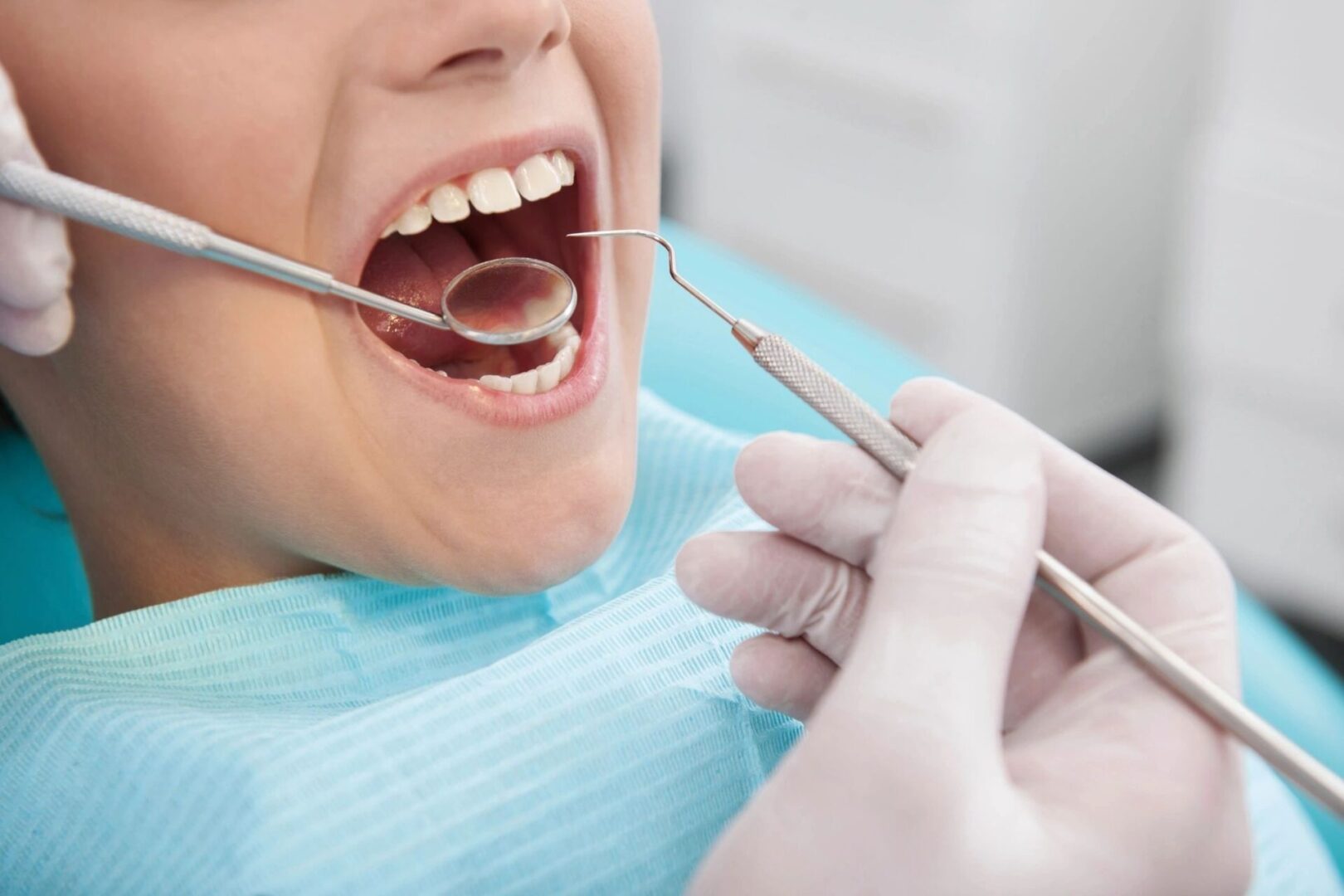
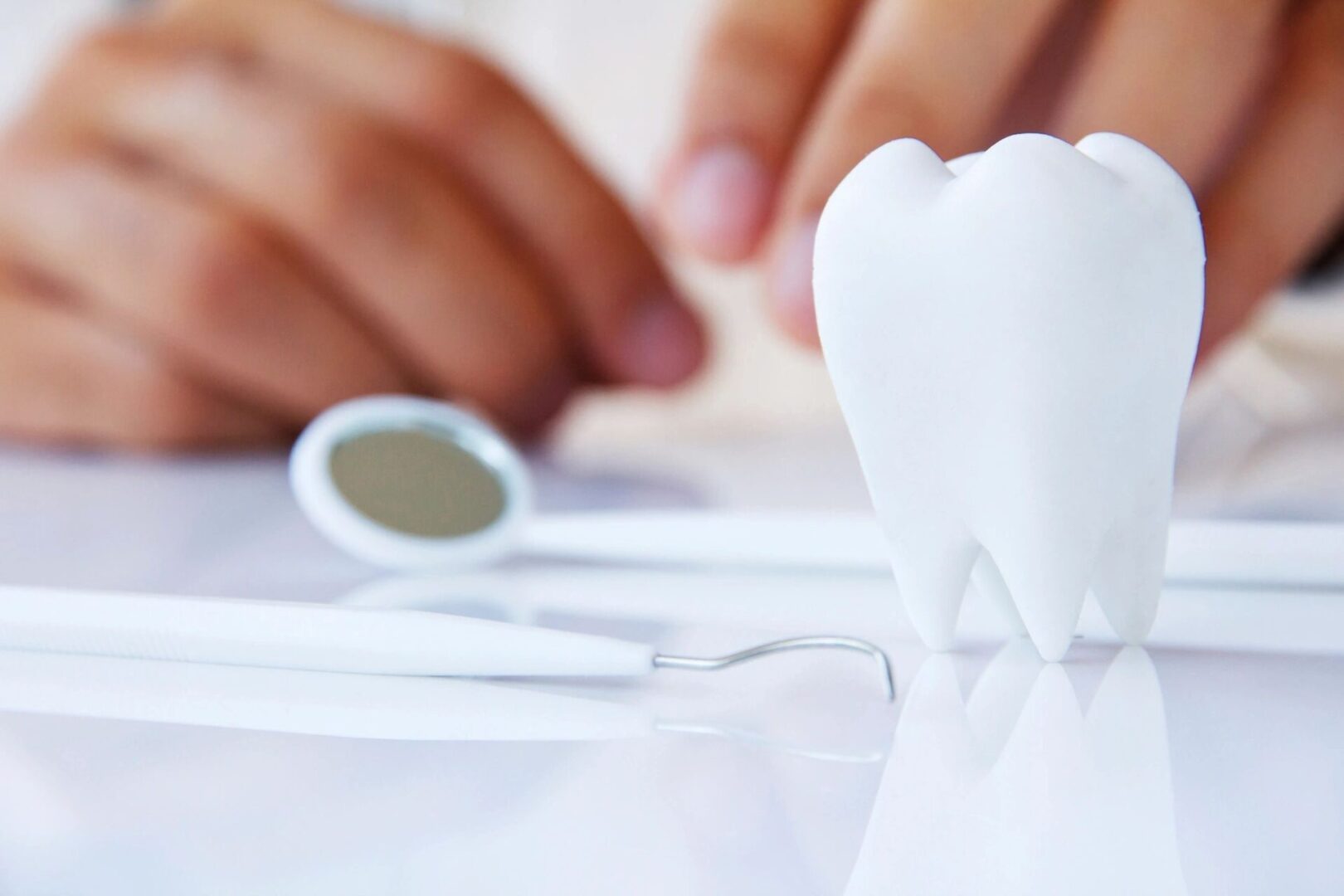
Oral Hygiene Program
We want you to be in an ultimate state of health. We desire to stop the problems before they occur and to treat them as they present readily. The key to preventing dental problems is regular cleanings and exams. In addition to improving your oral health and reducing your long-term dental costs, these preventative treatments will enhance your overall health. The teeth, gums, and the rest of the mouth are all tied to the systems of your entire body. Hence, poor oral health can cause other health problems. This important connection is often overlooked or forgotten.
For example, periodontal (gum) disease is a bacterial infection that causes inflammation which can break down the bones and supporting structure around the teeth. If not treated, your teeth will become loose and can fall out. Gum disease has also been linked to systemic illnesses, including stroke, heart disease, diabetes, ulcers, osteoporosis, arthritis, and pre-term births. These illnesses can occur because gum disease-causing bacteria in the mouth can enter the bloodstream and travel to other areas of the body.
Indications of gum disease include bleeding gums, bad breath, an itchy feeling, pain, or it can be silent. The form of treatment depends upon the extent of the disease. Non-surgical cleanings with or without anesthetics can help prevent the disease. Sometimes root planing and scaling are necessary. In more severe cases, periodontal surgery is required. Each step is more invasive and more expensive. Again, the key to not getting this disease is regular cleanings and checkups and good home care.
Hygiene and Routine Services
Routine Cleaning and Examination
The overall health of your mouth will be assessed by the Registered Dental Hygienist (RDH) and the Dentist. Necessary x-rays will be taken. The RDH will clean, polish, and apply fluoride to your teeth. Periodontal Disease Charting (the depth of pockets between your teeth and gums) will occur as needed. A Treatment Plan will be devised. For more information, refer to Your First Visit.
Your Routine Cleaning and Examination Schedule will be dependent upon your needs. Cleanings and Examinations are generally prescribed every six months. If periodontal disease is diagnosed, a different interval, such as every three months, may be recommended.
Root Planning and Scaling
These services treat gum disease to stop it from becoming severe. It may entail the use of an ultrasonic tool to clean between the gums and the teeth, down to the roots. A local anesthetic may be necessary.
Depending on the extent of the disease, it may be done in quadrants. Meaning the mouth is divided into four sections: upper left, upper right, lower left, and lower right. The number of quadrants that can be treated in one appointment will be dependent upon the severity of the disease.
No Treatment Needed or Schedule in-office Treatment Based Upon Doctor’s Examination
It is our hope that no further treatment is needed. We love only to have to reschedule patients for their next cleaning and examination.
When treatment is diagnosed, the patient will be scheduled in-office with the appropriate care provider. For example, if root planing and scaling are needed, you will be scheduled with a hygienist. If a cavity needs to be treated, you will be scheduled with a dentist. If treatment is diagnosed which cannot be treated in-office, you will be referred to a specialist.
Referrals to Specialists Based Upon the Doctor’s Examination – a Few Examples
A Periodontist - specializes in the supporting structures of the teeth, known as the periodontium, which includes the gingiva (gums), alveolar bone, cementum, and periodontal ligament. Treatments entail scaling and root planing, root surface debridement (removal of damaged tissue), and surgical procedures, such as gum transplants.
An orthodontist - specializes in the treatment of malocclusions (improper bites) and crooked teeth resulting from tooth irregularity and a disproportionate jaw relationship. Treatment focuses on moving teeth and the modification of facial growth through the use of braces.
An Endodontist - is a dental specialist concerned with the treatment of the nerve of the tooth (pulp). Service examples entail root canals or other surgical root procedures.
An Oral and Maxillofacial Surgeon - is a surgical specialist who performs procedures on the face, mouth, and jaw. Service examples entail treating accident victims, removing cysts and tumors, and difficult and complex extractions, such as wisdom teeth.
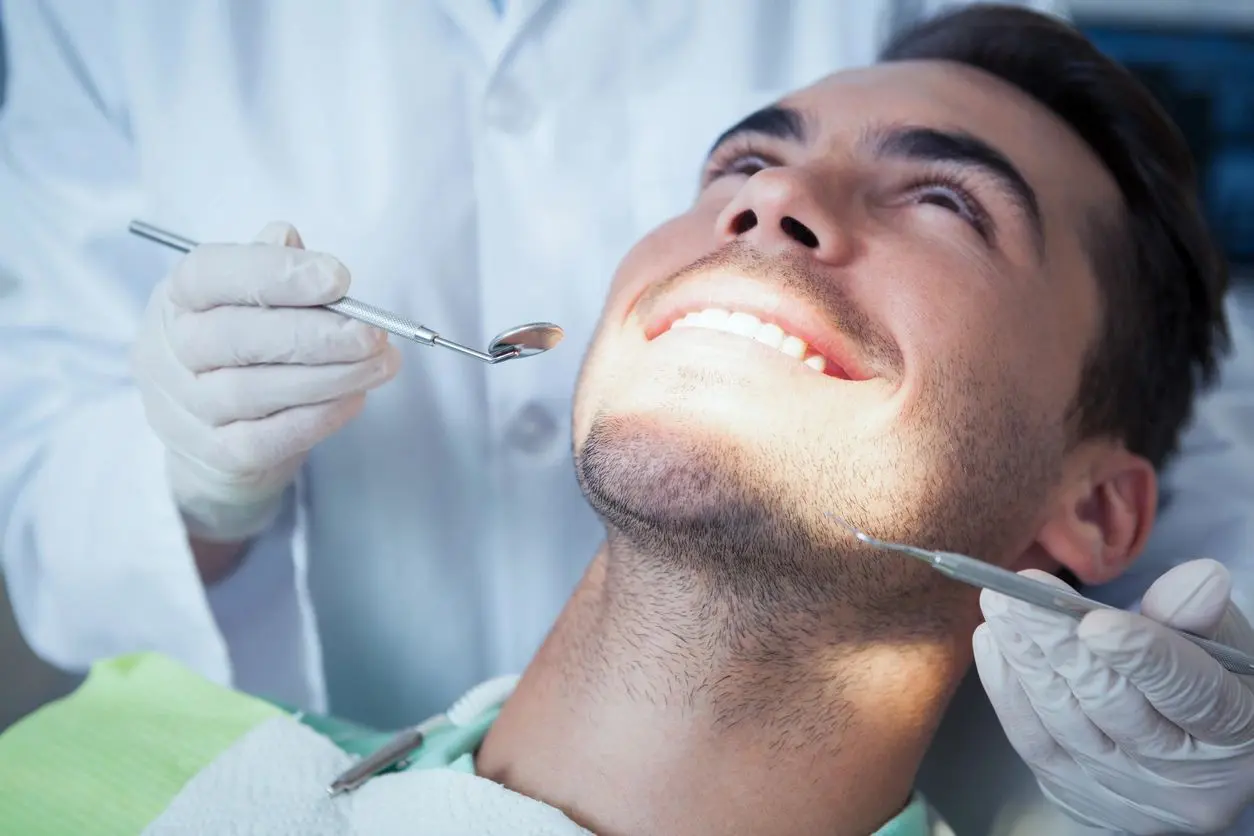
Your First Visit or Routine Cleanings and Examinations -- What to Expect
You will be seen by a Registered Dental Hygienist (RDH) and a Dentist. The health of your entire mouth will be considered. This process will include assessing for cavities, mouth cancer, other oral diseases, periodontal (gum) disease, and alignment. Based on your needs and desires, a treatment plan will be devised. Note that emergency patients will only be treated for their presenting problem. If needed, they will be scheduled for a routine cleaning and examination at the end of their emergency appointment.
Generally, your appointment will flow as follows:
Your Health History Review With the RHD
X-Rays -- Conducted AS NEEDED to help find hidden problems or to better identify known problems. Two types may be utilized.
Bite-Wings - Usually done Once a Year - Shows sections of the mouth and jaw. Used to check for decay between teeth, shows the alignment of the upper and lower teeth, and can display bone loss caused by severe gum disease or a dental infection.
Pan-Oral - Usually done every Five Years - Shows a full picture of the mouth and jaw. Used to detect problems such as impacted teeth, bone abnormalities, cysts, solid growths (tumors), infections, and fractures.
Hygiene Exam
Visual and Tactile (feel) of Mouth
Assess for Periodontal (Gum) Disease - Perio Chart (Measure the Depth of a Pocket between a Tooth and the Gum) as Needed
Prophylactic Cleaning (Prophy)
Remove plaque (pale yellow biofilm/colony of bacteria) and calculus (tartar/hardened plaque) deposits from exposed tooth surfaces and from between teeth to help prevent cavities.
Remove deposits from just below the gum line to create tidy gingival margins to prevent periodontal disease.
Polish Teeth to remove stains and smooth surfaces so that plaque cannot easily attach and accumulate.
Fluoride
Fluoride will be applied to your teeth. Fluoride is a mineral that naturally occurs in many foods and water. When acids from plaque, bacteria, and sugars in your mouth come in contact with the tooth, demineralization (loss of minerals) occurs. These acid attacks weaken the enamel of your tooth and make it susceptible to the formation of cavities. Fluoride helps prevent tooth decay by making the tooth more resistant to acid attacks
Doctor’s Exam
History Review and X-Ray Review as Needed
Visual and Tactile (Feel) of Mouth
Exploratory with various Dental Instruments
Treatment Planning
Based on the RDH’s and Doctor’s findings, a treatment plan will be devised.
The plan will consider their findings, your needs, and your desires. The whys and the hows will be fully described to you!
Home Care
The RDH will educate you about how to optimize your oral health efforts between visits. It will likely entail the hows and whys regarding brushing and flossing and the importance of healthy habits such as good nutrition and not using tobacco products.
Re-Appoint & Payment
At the close of your appointment, the RDH will escort you to the Hygiene Scheduling Coordinator for payment and schedule your next Cleaning and Exam. If additional treatment was prescribed, you would be escorted to the Financial Coordinator for payment and to schedule an in-office treatment appointment. In addition, your treatment plan and the related costs will be reviewed. Payment and insurance questions will be addressed, and a Financial Plan for upcoming treatment will be created. Also, any necessary referrals will be made - i.e., orthodontist (braces), periodontist (gum disease), oral surgeon (extractions), Etc.
General Dental Services
General Dentists are oral health experts. They strive to keep your family’s teeth and their supportive structures healthy and disease free. To accomplish this goal, procedures and treatments will be utilized as needed to make an accurate diagnosis and to restore the mouth to a more healthy state. In addition to improving your oral health, many treatments also serve to improve appearance. A brief discussion of various treatment offerings performed at the office is as follows.
Examinations and X-Rays
Routine Dental Exam
Performed by Dr. Recker or Dr. Schnipke during the Hygiene appointment, as discussed in Routine Cleanings and Examinations.
Adult Emergencies
We realize that the unforeseen can happen. In these situations, the doctor’s examination will focus on the presenting problem. In order to make an accurate diagnosis, it is likely that x-rays will be taken, and treatment will proceed as considered necessary.
If you are not already one of our patients, we highly recommend that you schedule a Routine Cleaning and Examination. Following through with this treatment recommendation may significantly reduce the onset of dental emergency situations. Also, in the long run, it is likely to save you pain and discomfort, time and money, and may even improve your overall health status.
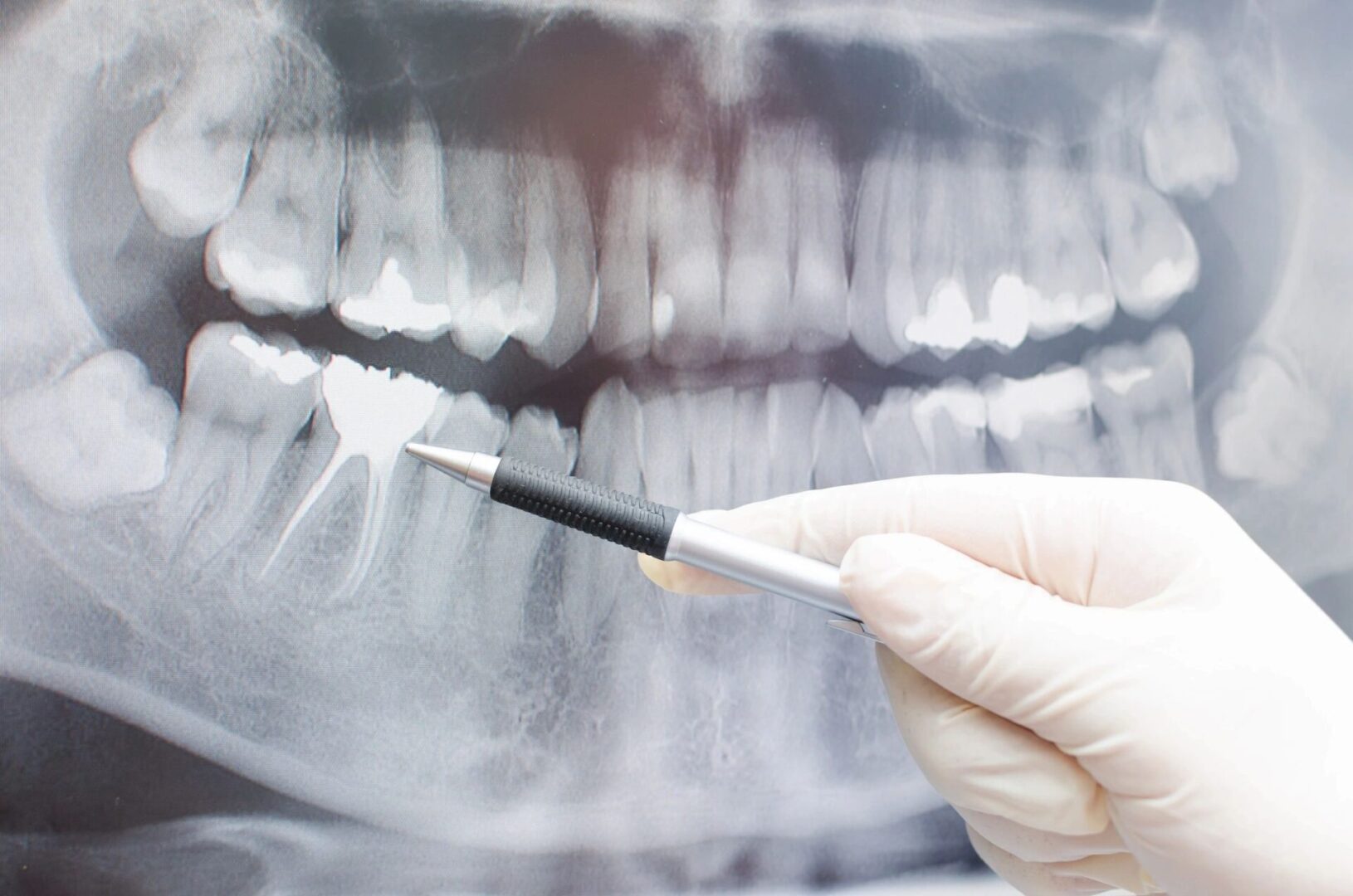
Fillings
Dental fillings are used to treat cavities. The decayed portion of the tooth is removed, then the area is filled in order to restore and strengthen the tooth. The filling may be completed by Dr. Recker, Dr. Schnipke, or by our Expanded Functions Dental Assistant (EFDA).
The office offers various types of fillings, namely composite resin (tooth-colored plastic material filled with glass) and amalgam (silver) filings. Many offices no longer offer silver fillings, even though they are less expensive, much more durable, and less prone to sensitivity. The modern pre-encapsulated silver filling material is the safest and the most tested of all dental materials. For these reasons, we feel that it is important to offer the use of this material. In the end, the decision of which material to use is up to you.
Finding and filling cavities early is important as it stops further decay. If left untreated, more expensive and more costly procedures, such as root canals, crowns, or extractions, may become necessary.
Extractions
There are a number of reasons why a tooth needs to be removed from the mouth. It is common to remove teeth because of spacing problems. Baby teeth may need to be removed for braces, or incoming wisdom teeth have nowhere to drop down. In other cases, as a result of decay, a crack, or a fracture, teeth may need to be extracted because they are too damaged to repair.
The process will be made as simple and painless as possible. Rest assured that you will be in skilled hands. Occasionally, for complex and difficult cases, such as impacted wisdom teeth, a referral will be made to an Oral and Maxillofacial Surgeon.
Root Canals
Root Canals enable us to save teeth that would otherwise need to be extracted. Therapy is needed when the pulp (nerve) inside your tooth becomes inflamed or infected. Inflammation or infections can occur due to deep decay, a cracked or chipped tooth, old leaky crowns or bridges, or trauma. Sometimes it occurs out of the blue, with no visible damage.
Severe pain is likely to occur if left untreated. An abscess (pool of puss) can form inside of the tooth, gum, or bone, resulting in the loss of the tooth, along with gum and bone damage. If the infection is left untreated, severe swelling and hospitalized treatment due to sepsis (blood infection) may be needed.
Treatment entails removing the infected pulp. The pulp chamber and root tips are cleaned and disinfected. The tooth is then filled with gutta-percha (rubber-like material) and restored with a filling or crown for protection. Complex and difficult cases will be referred to an endodontist.
Crowns
A dental crown is a tooth-shaped cap that is placed over a tooth. It restores its shape and size, and strength and improves its appearance. When cemented into place, it fully encases the entire visible portion of the tooth that lies at and above the gum.
Crowns are used to protect a decayed, weak tooth from breaking or to hold parts of a cracked tooth together. They are used to support tooth bridges and are to cover dental implants. They are also used to make cosmetic modifications to cover misshaped or severely discolored teeth. They can be used on children’s baby teeth to save a tooth so damaged by decay that it can’t support a filling until it naturally falls out.
Crowns can be made out of several types of materials, such as porcelain-fused-to-metal, all-ceramic or all-porcelain. Be assured that only the more effective, highest quality materials will be discussed and used.
Bridges
A dental bridge does what it claims to do, bridge the gap created by one or more missing teeth. It is made up of two crowns on either side of the gap. The teeth that these crowns rest on are called the anchoring or abutment teeth. Sometimes they are natural teeth, while other times, they are implants. The false teeth that fill in the gap are called pontics.
Bridges function to restore your smile and to restore your ability to chew and speak properly. By replacing the missing teeth, bridges distribute the forces in your bite properly. They also help to maintain the shape of your face and prevent the remaining teeth from drifting out of position.
There are different types of dental bridges. Only the highest-quality, most effective options will be considered and utilized.
Partials - Removable Partial Dentures
A partial is a dental prosthetic (artificial tooth or teeth) that can be removed from the mouth somewhat like an orthodontic retainer. A bridge is also a prosthetic, but it is permanently anchored inside the mouth.
They are sometimes called a RPD (removable partial denture) and are often selected as a less expensive option over a bridge or dental implant for replacing lost teeth. They may also be used when there is the potential for additional future tooth loss. New teeth can be added to a partial pretty easily and less expensively. They also require much less tooth reduction as compared to a bridge.
Partials can be made out of flexible nylon or vinyl, gum-colored material. These tend to be more comfortable to wear. Partials can also be made out of a cast-chrome frame and more rigid acrylic material. These tend to be long-lasting.
Treatment entails extracting dysfunctional teeth, making impressions, then sending them to a high-quality lab that will make the partial as per the doctor’s order. When the partial is ready, it will be positioned and adjusted as needed to fit your mouth.
Complete Dentures
Complete dentures are commonly known as false teeth. As partials, they are also prosthetic devices constructed to replace missing teeth. In the case of complete dentures, all of the teeth in one or both of the arches are missing. Upper dentures replace the teeth in the maxillary arch, while lower dentures replace teeth in the mandibular arch.
In many cases, impressions can be made while the dysfunctional teeth are still in the mouth. Once impressions are done, the denture plates can be made at a lab, the teeth are extracted, and the patient goes home with the plates in their mouth. This process avoids the embarrassing "toothless" period and can even aid in the healing process by protecting the gum.
Some patients choose to have implant-supported dentures. A referral is made to a doctor who specializes in the placement of implants, and the dentures are made here, as indicated above.
Contouring and Reshaping
The contouring and reshaping process involves the dentist using a bur to remove tooth structure so that the tooth is more functional and aesthetic. Sometimes it is used with dental bonding. Sometimes it is used to reshape your gums to frame your smile better or to increase the appearance of your tooth size.
Tooth contouring and reshaping are used to change the shape, length, and position of the teeth. It is recommended for chipped, cracked, crooked, and overlapping teeth. This process can also be used to lessen the "gummy smile" appearance and for those who have the appearance of "small teeth."
Dental Bonding
Dental bonding entails using a highly moldable composite resin to repair or shape teeth. It tends to be affordable and conservative - meaning that treatment is not very complex. Bonding usually takes one visit and is painless.
It can be used to repair chipped teeth, close gaps or spaces between teeth, reshape worn teeth and enhance tooth color. Our doctors only work with the best bonding materials to skillfully sculpt and reshape your teeth to look appealing and natural.
Veneers
Veneers are wafer-thin, custom-made porcelain or ceramic shells of tooth-colored materials designed to cover the front surface of your teeth to improve appearance. They can be used as instant orthodontics, which hide flaws, and instantly creates a picture-perfect smile.
This procedure is recommended for people who have chipped, discolored, gapped, misaligned, uneven, and misshapen teeth.
Teeth Whitening
Teeth whitening can be a cost-effective and easy way to brighten your smile. The office offers in-office procedures and at-home treatments.
This procedure is recommended for individuals who have dull, yellow, or stained teeth as a result of aging, smoking, or consuming high-pigment food and beverages.
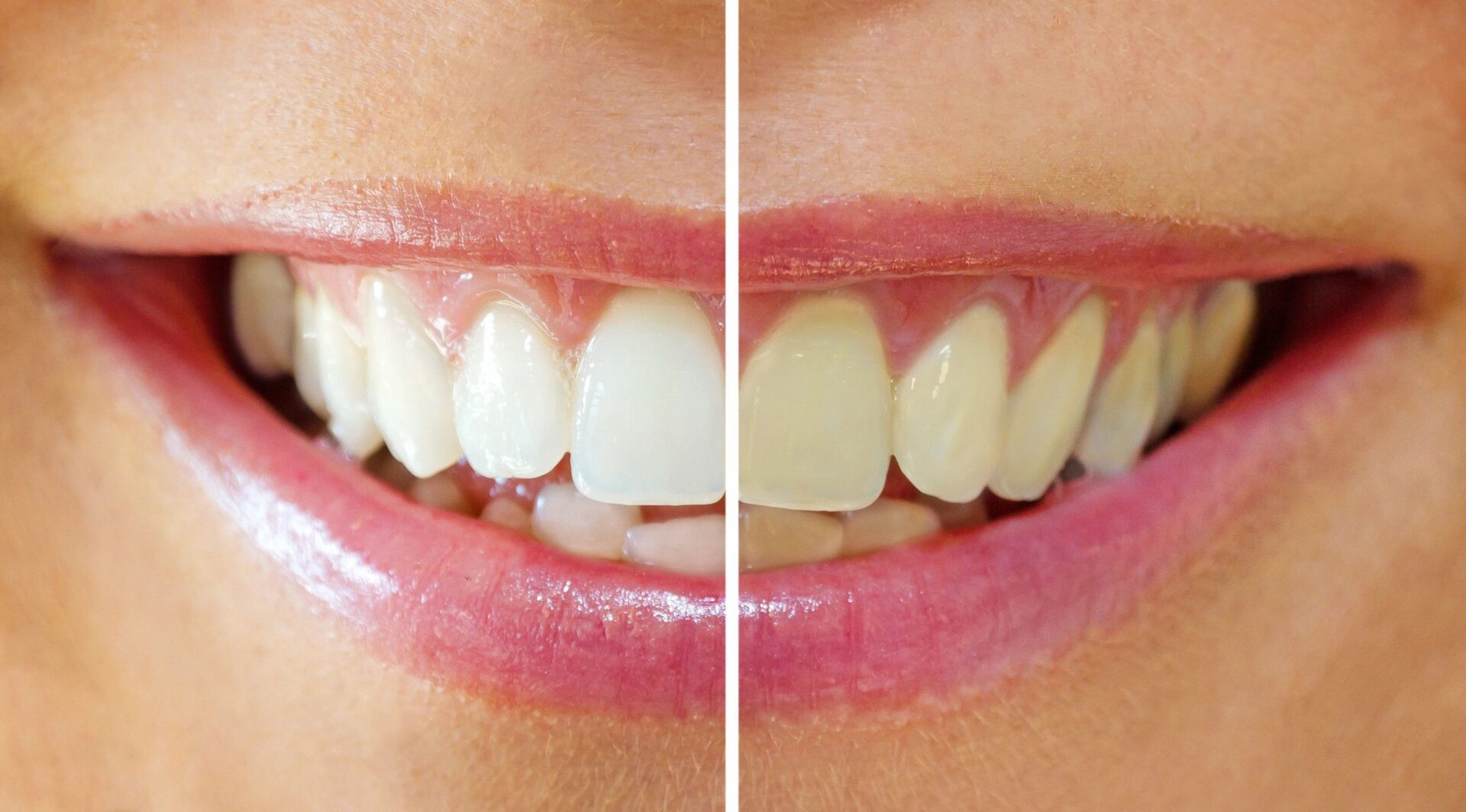
Botox
Botox is most known as a cosmetic treatment for lines and wrinkles on the face. Botox can also be used to treat a wide variety of medical conditions such as migraine headaches, temporomandibular joint disorder (TMJ), and Hyperhidrosis/Sweating.
Regarding migraine headaches, Botox injected in the head and shoulder areas interrupts the pathways of pain transmission between the brain and the nerves that extend from the spinal cord. Regarding TMJ disorders Botox is injected into the temporalis and masseter muscles which limits muscle functions and relieves pain. Regarding sweating, Botox blocks the release of neurotransmitter acetylcholine, which binds with your sweat glands to stop the signal to release sweat. Sweat reduction will be limited to the general area of injection.
